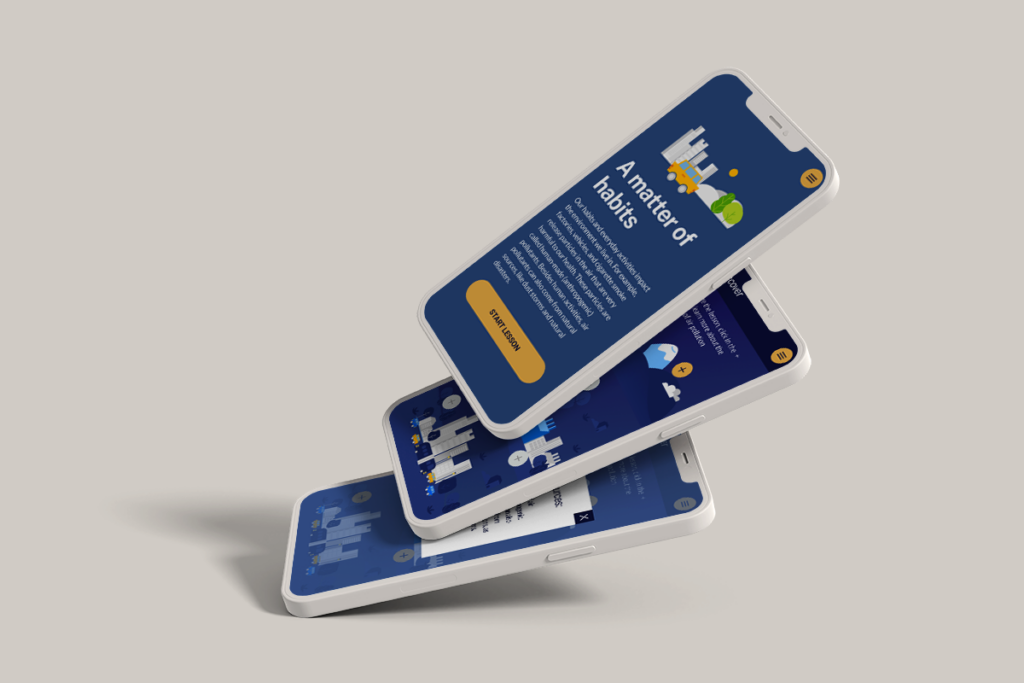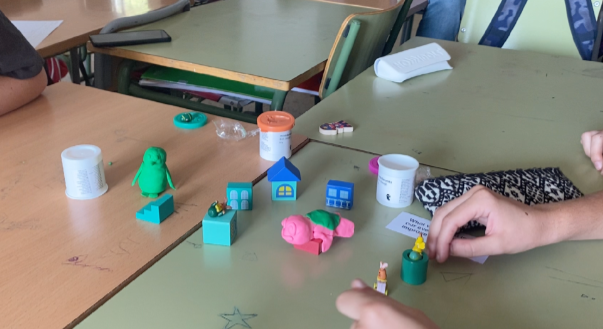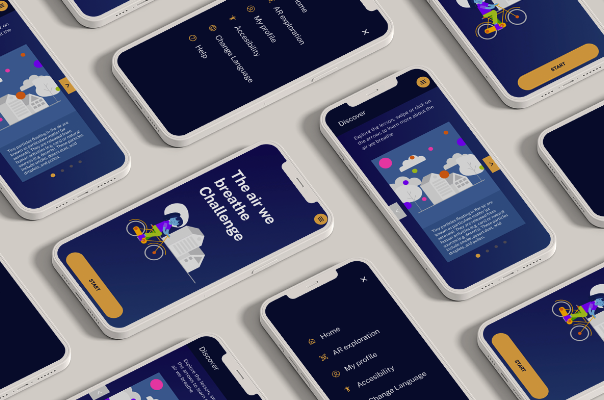From clay avatars to augmented reality: shaping digital experiences with and for
students
Barcelona Supercomputing Center team – 7th of September 2023

How do we go from playing with colourful modelling clay to creating an e-learning application?
Through a human-centred approach, user experience experts and air quality researchers from the Barcelona Supercomputing Center (Spain) are developing an interactive educational app to help students and citizens learn about air quality. The [GreenAir] app, developed as part of the GreenSCENT project, incorporates gamification and augmented reality (AR), making learning a fun and rewarding experience!
Aimed primarily at children aged 10-15 years old, the app involves a series of lessons, games and challenges on the basics of air quality and air pollution. The topics covered include the particles present in the air we breathe, sources of air pollution, the effects on our health, and the air quality index, among others. [GreenAir] also provides the opportunity to explore augmented reality maps of air quality across Europe, as well as the city of Barcelona as an example. The app will also serve as a useful tool for teachers to use in the classroom when teaching about air quality, as it is accompanied by a series of educational material. Here, we explore the design process behind the [GreenAir] app, the first version of which is expected to launch at the end of 2023.
An app in the making
Different methods of qualitative, quantitative and participatory design research were used at the initial stages of the app design to ensure that it is not only educational, but also interesting, pertinent, and suited to the requirements of the students themselves. Participatory design is a powerful approach that involves the active participation of end users in the design and development process of a product or service. When it comes to creating an app for students to learn about air quality, this approach can be incredibly beneficial. Last year, co- creation workshops were carried out at several schools part of the GreenSCENT project, whilethe [GreenAir] app was still in the concept definition stages. These workshops were intended to help better understand how the students felt regarding air quality and how they engaged with the related concepts.
As part of the workshops, the students participated in a narrative session using props like modelling clay and wooden blocks to actively engage in storytelling and use their senses. Modelling clay, with its malleable and tactile qualities, offers a medium for students to explore and imagine, which enhances the storytelling experience. During the storytelling session, the participants crafted a narrative that revolved around airquality and its impact on a fictional world. This hands-on activity enabled students to visualise and interact with the concepts in a tangible way, and researchers to understand what kind of misconceptions exist about air quality and where we could provide a fun and interactive experience. This kind of co-creation means involving the users themselves, i.e. the people who will be eventually using the product. Their input and feedback are crucial because of the unique insights and experiences they share that can help shape a better end result.

Why is co-creation important?
By including students and users in general in the design process, we can:
● Understand their needs: Users are the experts when it comes to their own experiences. By involving them in the design process, we can gain valuable insights into their needs, preferences, and challenges.
● Enhance usability: Students were able to contribute ideas for features or functionalities that they would like to see to make the app more useful or intuitive.
● Increase adoption of the app: When the students feel involved in the design process, they develop a sense of ownership and pride in the final application. They are thus more
likely to be happy with the result, as it reflects their input and addresses their specific needs.
● Promote innovation: Co-creation promotes teamwork and a variety of viewpoints. Involving kids in the design process allows us to draw on their imagination and generate fresh ideas that may not have occurred to us otherwise.

Finally, the active participation of students in the design process results in a more significant and useful learning tool that really connects with the intended audience. While the application was originally envisioned to only include augmented reality features, the interactions with students provided insights into the real needs and challenges of the different contexts revolving around air quality, thus changing and shaping a new vision for the app. This new vision involves a digital product that encompasses the students’ inputs, ideas and feedback, integrated into all
parts of the design process.
